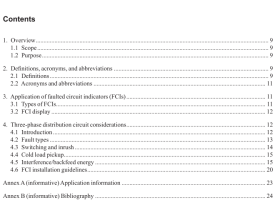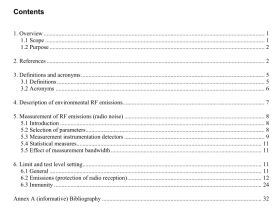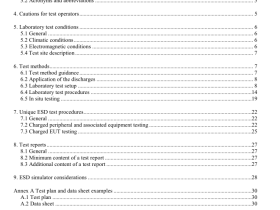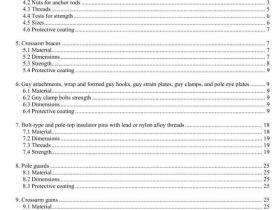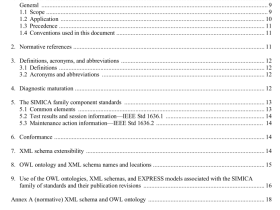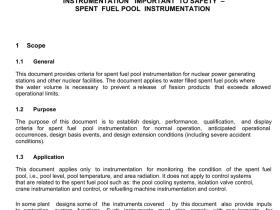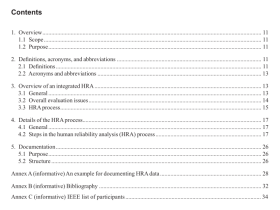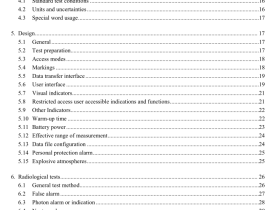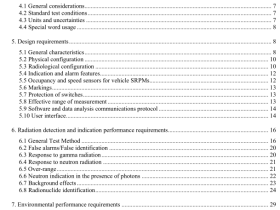IEEE Std 1732 pdf download
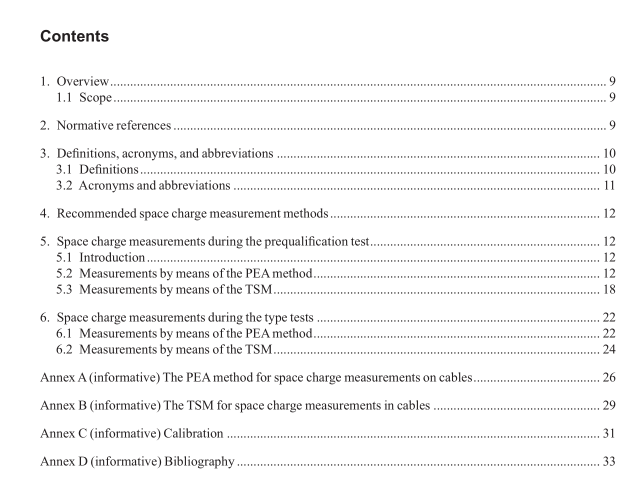
IEEE Std 1732 pdf download IEEE Recommended Practice for Space Charge Measurements on High- Voltage Direct-Current Extruded Cables for Rated Voltages up to 550 kV
The space charge measurement methods recommended for space charge measurements on high-voltagedirect-current (HVDC) extruded cables for rated voltages up to 550 kV are the following:
a)The pulsed electro-acoustic(PEA) method
b)The thermal step method (TSM)
For details about the PEA method, reference shall be made to CIGRE Technical Brochure(TB)288:2006.Formore details about the usage of the PEA method in the case of cable geometry, see Annex A.
For details about the TSM, reference shall be made to CIGRE TB 288:2006.For more details about the usageof the TSM in the case of cable geometry, see Annex B.
5. Space charge measurements during the prequalification test5.1 Introduction
Given the importance to space charge formation of cross-linking byproducts associated with the crosslinkingagent dicumyl peroxide, and of anti-oxidants and molecular voltage stabilizers, and the effect of humidity(water) and the relatively rapid transmission of water through extruded insulation (in particular polyethyleneand ethylene-propylene rubber), considerable care shall be exercised in performing PEA or TSM spacecharge measurements on HVDC extruded cables.Exposure to humid environments shall be minimized andlimited strictly to the measurement duration.Constant and predefined values of cable conductor temperature,temperature gradient across insulation wall, and humidity of the surrounding environment shall be maintainedduring such measurements, to every extent possible.Ambient conditions during PEA or TSM measurementsshall be recorded and included in the space charge measurement report.
5.2 Measurements by means of the PEA method
5.2.1 Measurement times
During the long-duration voltage test of the prequalification(PQ) test (described in CIGRE TB 496:2012,page 14,3.4) two sequences of space charge measurements by means of the PEA method shall be carried outat the following times:
a) Before starting the long-duration voltage test of the PQ test: This first sequence of space charge
measurements shall be carried out on a virgin (unaged) cable sample identical to the cable employedin the PQ test loop (see CIGRE TB 496:2012,subclauses 1.5.2,3.3, and 3.4 ); this will serve as areference for calibrating the PEA measurement set-up.
b)After the completion of the long-duration voltage test of the PQ test: This second sequence of space
charge measurements shall be performed on an aged cable sample identical to the cable employed inthe PQ test loop and subjected to the same long-duration voltage test as the PQ test loop.
5.2.2 Preparation of cable sample for space charge measurement with the PEA method
For each sequence of space charge measurements with the PEA method at the times established in 5.2.1 , thecable sample shall be arranged in a cable loop consisting at least of:
A cable of length sufficient to perform the space charge measurements by means of the PEA methodsatisfactorily.
Two terminations. Laboratory terminations are acceptable provided that they do not give rise to anyflashover during both the space charge measurements and the whole PQ test.
The two sequences of space charge measurements with the PEA method at the times established in 5.2.1 shallnot be performed on the same cable loop. Indeed, the PEA method requires that the outer shielding layer ofthe cable is removed and the outer semiconductive layer of the cable is exposed; this modifies the de-gassingrate and the effect of humidity on the cable loop subjected to space charge measurements compared to anunmeasured PQ test loop.The two different cable loops for the two sequences of space charge measurementsat the times established in 5.2.1 shall be obtained according to one of the two following alternative procedures:
a)The two cable loops shall be both obtained from the PQ test loop provided that its initial overall
length is sufficient——as follows:
l) Thefirst sequence of space charge measurements with the PEA method at the first time established
in 5.2.1 shall be performed at a location of the PQ test loop where the PEA set-up can be properlyinstalled.
2) After this first sequence of space charge measurements,the cable section where the PEA
measurement cell is located shall be cut and removed. A joint shall be installed between theremaining cable ends, thereby preventing further degassing and humidity penetration in the cableinsulation during the whole PQ test.3
3)The long-duration voltage test of the PQ test shall be carried out.
4)The second sequence of space charge measurements with the PEA method at the second time
established in 5.2.1 shall be performed at a location of the PQ test loop where the PEA set-up canbe properly installed.
b)The cable loop for the first sequence of space charge measurements—made of a virgin cable identical
to the cable employed in the PQ test loop [ as prescribed in 5.2.1 , item a)] and of length sufficient forthe PEA set-up to be properly installed (as described in 5.2.2)—shall be diffcrent from the PQ testloop. The cable loop for the second sequence of measurements shall be the PQ test loop and the spacecharge measurements shall be performed at a location of the PQ test loop where the PEA set-up can beproperly installed.
NOTE—lt is permitted to let the first cable loop undergo the whole PQ test leaving the PEA measurement cell on it tomonitor space charge evolution during the PQ test and to compare it with the measurements carried out on the second cableloop after the completion of the PQ test.’
